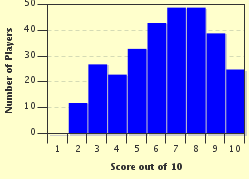Quiz Answer Key and Fun Facts
1. The mirror test is designed to test whether an animal recognises itself in a mirror. This bird is said to be the only non-mammal to pass the test. If the photo doesn't help, there used to be a British children's TV programme, which ran from 1968 to 1980, with the same name. What is the bird's name?
2. Now we are looking at an elaborate house-maker. The photo shows a couple of examples. If you want to find a fancy nest builder, look no further than this bird. Which bird is this?
3. If your car parked at Fox or Franz Josef Glaciers in New Zealand has survived undamaged, you are doing well. This bird is not shy and seems to enjoy stripping rubber off cars. It is also one of the more intelligent birds around, being adept at solving puzzles. What is the name of this parrot?
4. Dropping bones onto rocks probably doesn't qualify as using tools, however using stones to crack open ostrich eggs does. This bird of prey has been recorded as doing both. What is the name of this scavenger?
5. "Clever girl ..." were the last words to be heard from the hunter Muldoon when outsmarted by a pair of velociraptors in "Jurassic Park" (1993). This bird can do the same sort of thing: one bird distracts the mother bird whilst the other one snatches a chick. Which flightless rail bird, endemic to New Zealand, is shown in the photo?
6. One story about this bird is that if it were to disappear from the Tower of London, the Crown of England would fall. Recognised as an intelligent bird, some have argued that it demonstrates linguistic displacement - an ability to communicate about something other than things occurring in the here and now. Considered by some to be a bird of ill omen, which bird is this?
7. This passerine bird has quite a memory. During a season it may store as many as 98,000 pine seeds (according to one source) and has the ability to find most of these from the previous autumn. The European one is on the left and the North American one is on the right. What is it called?
8. The woodpecker finch uses a tool to extract grubs from crevices in various trees. It may use a twig or cactus spine, often sizing it for ease of use. Visited during the 1830s by a ship bearing a budding naturalist, what island group does the finch share with the marine iguana, a giant tortoise and the flightless cormorant?
9. A traditional fishing technique, used in Japan and China and going back over a thousand years, involves using these birds to catch the fish on behalf of the fishermen. It also suggests that they have the ability to count. What is the bird?
10. Aesop's Fables from the 5th century BC tell how this bird put pebbles into a pitcher to raise the water level so that it could quench its thirst. It turns out the fable could be based on real-life observations. Reported in "Current Biology" (Vol. 19, Iss. 16, Pp: 1410-1414, Aug 2009), birds from the Corvus genus performed the same feat. Which of these birds demonstrated this behaviour?
Source: Author
suomy
This quiz was reviewed by FunTrivia editor
Tizzabelle before going online.
Any errors found in FunTrivia content are routinely corrected through our feedback system.

